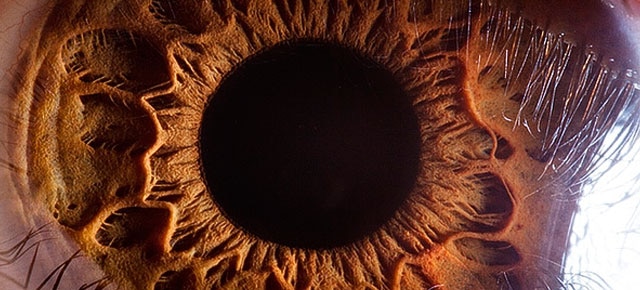“The iris comprises two layers: a pigmented stroma at the front and pigmented epithelial cells beneath the stroma. The stroma connects to a series of dilator muscles (dilator pupillae) that pull the iris radially to widen the pupil and pull it into folds, as well as a sphincter muscle (sphincter pupillae) that contracts the pupil in a circular motion.”
The stroma and deeper iris tissues can be bathed in aqueous humour through the Crypts of Fuchs, a set of apertures on either side of the collarette. Blue irides reveal collagen trabeculae that line the perimeter of the crypts.
The pigmented epithelium from the posterior surface continues to generate a series of tiny ridges near the pupillary edge known as pupillary ruffs (crenations).
A group of circular bands or folds located halfway between the collarette and the iris’s origin are the circular contraction folds, often referred to as contraction furrows. These folds result from the iris’ surface changing as it enlarges. Crypts are extra apertures at the base of the iris that might
Whoever told you “your eyes are gorgeous” hasn’t looked closely enough. Suren Manvelyan, a 34-year-old Armenian physics instructor, created these incredible close-ups of the human eye by using his friends, coworkers, and students as models. He never thought he would see anything like that – when viewed close up, our eyes look like some dramatic surfaces of far and unknown planets.
“Taking macro photos of insects and plants is typical, but attempting to capture an image of an eye? These outcomes surprised me, says Suren. We pass by hundreds of eyes every day, yet we never even consider that they might have a stunning structure similar to that of undiscovered planets’ surfaces”
“Taking macro photos of insects and plants is very normal, but attempting to capture an image of an eye? I did not anticipate these outcomes. I had no idea they had such a convoluted appearance. Everyday we see hundreds of eyes but do not even suspect they have such beautiful structure, like surfaces of unknown planets.”


